- Administrator
- Albums and Singles
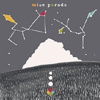 Unfussily and without gimmicks, Adam Pierce (as Mice Parade) favors certain notes and chords that quickly build excitement, sadness, and nostalgia. I don't think of this as cheap, easy, commercial or anything less than art. To dismiss it as pop would be a mistake.This disc is an evolved version of his flowing, blissful, non-clichéd popular music.
Unfussily and without gimmicks, Adam Pierce (as Mice Parade) favors certain notes and chords that quickly build excitement, sadness, and nostalgia. I don't think of this as cheap, easy, commercial or anything less than art. To dismiss it as pop would be a mistake.This disc is an evolved version of his flowing, blissful, non-clichéd popular music.
I recently saw Adam Pierce making a one-song sit-in appearance at a late night Vashti Bunyan gig at the Central Presbyterian Church in Austin. Without my glasses it was hard to see whether the blue instrument he was holding was a baritone ukulele or a guitar. Either way, his contribution was virtually undetectable. If he played a note it went under my radar, though in the circumstances such restraint was well-judged. Bunyan was magnificent, her voice an unadorned wonder. A deep beauty shines out of her; she speaks in little more than a warm whisper, reacting to applause as kindly and gently as if we were her offspring bringing her our latest crayon doodle. Except for the darker and brilliant "I’d Like to Walk Around in Your Mind" her songs are sad, luminous, quiet pieces of artistry which lack nothing. The man who is Mice Parade knows better than to gild the lily.
A couple of years ago I either realized or read someone else say that Mice Parade will probably never make a masterpiece. We shall see, but certainly, wisely, it seems that there is merely a flow and Adam Pierce is going with it; in that sense like the Incredible String Band and Gastr del Sol.
The 4 minute opener "Sneaky Red" could be the bastard son of George Formby and MBV, propelled by a dynamic electric guitar crunch and the tilt-a-whirl strings of it's nylon counterpart. Pierce's voice has never sounded better or sadder. That is, until the deceptive "Tales of Las Negras" which follows. Driven by slippery drumming, a blissful European sensibilty and a gentle descending hum, eventually the track features the cool warbling of Stereolab's Laetitia Sadler against the rising sparkle of Pierce's plucking. Not a moment wasted.
The handclaps and subtle highlife-influenced guitar of "The Last Ten Homes" give it enough contrast to balance the slightly less satisfying vocals. "Snow" bursts in with more of the polite yet contrasting crunch. What follows is either a peak or an annoyance, depending upon mood or point of view. Kristin Anna Valysdottir's singing may cross the fey line for some people or make "Double Dolphins on the Nickel" a classic. Either way, it's worth hearing and the clever pulsing guitar notes are an undeniable foil.
"Swing" clears the air with swirling strokes after the muddier and crowded "Satchelaise." The latter has a relaxed feel of a live workout that didn't ignite, seeming instead to stagnate. "Circle None" begins with a hypnotic quasi-African guitar figure before bleeding into the kind of portentous, ebbing, instrumental piece that brilliantly seems to be arriving and leaving at the same time. Currently perfect for ad agencies and NPR producers, neither of which is Pierce's fault or his intention, I imagine. The piece subtly reprises earlier sections of the record, as does the chiming, choppy, spiralling finale "The Nights After Fiction."
The music is affecting because it consists of sounds which Pierce believes in and which he finds affecting. They are as carefully chosen as his contribution to the Bunyan show. Given his idiosyncratic caution this record shows a definite willingness to expand the palate of sound. That is surely the way forward.
samples:
Read More
- Administrator
- Albums and Singles
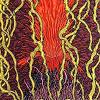 Yet another collaboration from the same group of people is getting tedious, not enough experimentation or progress is being made on the musical front. This duo comprises of Caleb Scofield and Santos Montano, both from Old Man Gloom and the former is also in Cave In. I have a feeling more people will be sold on Zozobra based on the artist connections than on the strength of the music. The Hydra Head talent pool ia growing stagnant and this mediocre at best album is firm proof that the label is in serious danger of becoming a circle jerk for a few select artists.
Yet another collaboration from the same group of people is getting tedious, not enough experimentation or progress is being made on the musical front. This duo comprises of Caleb Scofield and Santos Montano, both from Old Man Gloom and the former is also in Cave In. I have a feeling more people will be sold on Zozobra based on the artist connections than on the strength of the music. The Hydra Head talent pool ia growing stagnant and this mediocre at best album is firm proof that the label is in serious danger of becoming a circle jerk for a few select artists.
Hydra Head
While the music on Harmonic Tremors is far from bad, it is indistinguishable from the vast majority of metal bands who have formed in Isis' wake. Tracks from this album could be swapped with any of those featured on the recent album by Clouds, also a Cave In spin-off. Like that Clouds album, the vocals here are a major stumbling block. The growled vocals have been dirtied up with enough distortion to make them gritty but at the end of the day they resemble Slipknot or Trivium or whatever metal band is popular now; aggressive and angry because that is what supposedly fits with this music. That being said, even without the vocals the songs would still be average. It is as if more time has been spent getting good guitar tone rather than coming up with the goods in terms of riffs. Many of the guitar lines have the essence of a seasoned player going through their warm up exercises instead of challenging themselves.
"Kill and Crush" and "Invisible Wolves" are both sub-par in terms of songwriting. I hear many bands who have only been playing a few months performing at open mic nights come up with songs of a similar quality, I expect more from two artists with a far more substantial recording history. Most of Harmonic Terrors come off as songs that have only been jammed out a little before heading to the recording studio as too many of the tracks come across as half-finished. A little more work and my opinion on this album would be totally reversed. The odd song does redeem Zozobra, I enjoyed "Silver Ghost" which avoids the growling vocals and the playing is stripped down compared to the other songs. It's a refreshing listen amid the other over-egged cakes. If more of the album was in this vein I would be singing its virtues from the rooftops.
It is not news that Hydra Head has turned too far inwards and spends too much time coming up with new merchandise ideas instead of finding new talent. They are relying too much on musical cross pollination from many bands that are too similar to each other to give rise to interesting offspring. Harmonic Terrors comes across as one of these failed hyridizations. While I am not saying that Scofield and Montano should not play together, both themselves and Hydra Head should be able to stand back and honestly ask themselves if this is quite as good as it could be. All parties (artists and label) have put out good music before so it is not unreasonable to expect something of a higher quality.
samples:
Read More
- Administrator
- Albums and Singles
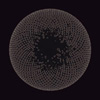 Taking inspiration from the likes of the Velvet Underground and Albert Ayler, Organ Eye is the manifestation of four different persons "doing improv" for the first time, and the results are worth taking a closer look at.
Taking inspiration from the likes of the Velvet Underground and Albert Ayler, Organ Eye is the manifestation of four different persons "doing improv" for the first time, and the results are worth taking a closer look at.
The term “drone” has really become passé. Now linked to the likes of metal artisans such as Sunn O))) and Earth, it is now almost synonymous with massive sustained guitar riffs and overly processed vocals. Organ Eye, a four-person improvisation group featuring members of Portugal’s Osso Exotico and New Zealand’s Minit are also in the business of doing drone, but more in the classic sense. You won’t find any Sunn amps or smashed guitars here, but you will find classic Spacemen 3 guitar feedback drones and Velvet Underground inspired violin work.
The band cites the aforementioned VU's "Sister Ray" (17 of the greatest minutes in rock history), Buddhism, and Albert Ayler as some of their major influences, and it’s pretty transparent in their work. It’s drone more in the sense of dwelling in feedback and exploring the nuances of the tape loop as an instrument. The two massive tracks are based on live improvisations, and like the giants of free jazz, the players reflect off each other and create something that sounds like it was carefully planned and choreographed long before any gear was turned on.
"Tema #1" opens like the Spacemen 3 cats, all loops of guitar feedback and odd percussive found sounds here and there. The wall of feedback continues to build throughout the entire work, never really getting into the realms of harsh noise or the like, but does become progressively dissonant as the track wears on. Later, John Cale is channeled through David Maranha's violin work, reminscent of some old record with a banana on the cover. The piece finally ends with gentle electronics slowly fading away.
Where "Tema #1" opened with the organic feel of six strings resonating, "Tema #2" takes the bionic approach and begins with grating high pitched tones, like a telephone call on a busy signal slowly being shredded by a blender. Scrapes and other odd percussive textures are promenant as well, until the electronics build more and more through the first half, to the point that listening becomes difficult (in the “ow my ears are starting to ring” sense) before dropping a few notes in the scale and settling in at a more mid range set of electronic loops and harmonium drone. At the end it creeps up to tinnitus level once again before ending abruptly.
Being that this is drone based (in the La Monte Young sense, not in the black metallist sipping a chai latte sense), it can’t really be deemed “easy” listening. However, the players seem to be a natural fit with each other, and have made an improvisation that just feels natural, and right and leads to a very compelling debut work.
samples:
Read More
- Administrator
- Albums and Singles
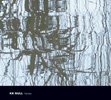 Being a noise musician is kind of like joining the mafia. Sure, you can do other things with your life, branch out and try something new, but you can never really leave the scene. Seeing a release on Touch, that bastion of UK beard-stroking electronic experimentation, would lead one to think Kazuyuki Kishino has dropped the guitar noise and tossed out the effects in favor of a Powerbook and Max/MSP…but that would be wrong.
Being a noise musician is kind of like joining the mafia. Sure, you can do other things with your life, branch out and try something new, but you can never really leave the scene. Seeing a release on Touch, that bastion of UK beard-stroking electronic experimentation, would lead one to think Kazuyuki Kishino has dropped the guitar noise and tossed out the effects in favor of a Powerbook and Max/MSP…but that would be wrong.
KK shows a more medatative, compositional side here yet still manages to throw enough feedback and distortion in to keep it a KK Null release. The opening screech of the first track, "0415," is just as harsh as anything else he's recorded as KK Null, ANP, or Zeni Gava, and is more jarring than a hot coffee enema in the morning. The difference between this and any other faceless noise release, however, is that the static eventually fades away, revealing a backdrop of heavily effected and delayed electronic tones, junk metal percussion, and finally swelling back up into the harsh static from the beginning. This is a somewhat stark contrast from the next track, "0418," which is based around low end loops and rhythmic electronic tones, with just a hint of noise mixed in.
Fertile was inspired by field recordings made during a trip to Australia, many of which were then integrated into unfinished studio tracks, though often mangled beyond recognition. It makes for a nice contrast between the digital harshness of his electronics, and the subtle, organic sounds derived from these nature recordings. Just don't expect Chris Watson audio documentaries here.
One of the excellent things about this work is how strikingly diverse it is from track to track. Besides the aforementioned tracks, there's "0500," with its looped field recordings and electronic percussion, right next to "0359," which sounds like Null playing a rousing game of Space Invaders through a bank of guitar effects. The album ends with two longer tracks, both consisting of more overt field recordings and organic textures and enough reverb to scare Lee "Scratch" Perry.
Kishino has made a very different release under the Null moniker that shows he is exhibiting a sense of growth and an urge to try new things and styles, but still keeps that harsh noise history of his around to keep that cred with the noise fans.
samples:
Read More
- Administrator
- Albums and Singles
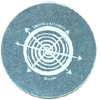 Those present at November's Brainwaves who witnessed Troum's mindblowing set who have been seeking more music from them that resembled their set that night can stop here. Reviewing the videos from Brainwaves it's all clear now that Shutûn is undoubtedly the piece performed that night. For those unfortunate enough to miss out, a large portion of this performance is actually available now on the video podcast.
Those present at November's Brainwaves who witnessed Troum's mindblowing set who have been seeking more music from them that resembled their set that night can stop here. Reviewing the videos from Brainwaves it's all clear now that Shutûn is undoubtedly the piece performed that night. For those unfortunate enough to miss out, a large portion of this performance is actually available now on the video podcast.
While the live set at Brainwaves was billed as Troum, it was more accurately Troum & All Sides. Troum is Martin Gitschel (aka the Glit(s)ch) and Stefan Knappe (aka BarakaH) while All Sides is Nina Kernicke. Shutûn, however, makes me fondly recall Sen, the Mort Aux Vaches CD from 1999, which was the first Troum album I truly fell madly in love with. Like Sen, Shutûn is one long piece with numerous movements.
After experiencing their performance live in person and going through the videos now, I feel both special and spoiled by witnessing how their music comes together. The arsenal of gear in tow is exciting, especially as Troum are tagged with the "drone" label (and of course, they're partially to blame as the label they operate is Drone Records), however, it's never as boring or uninspiring as some of the biggest drone names, and their show won't consist of two dudes standing motionless (or posing) with guitars for long stretches playing the same chord for an entire set. On Shutûn, Martin begins with vocals alone, run through a careful chain of effects, reverberating as if in a long, dark, hollow hall. A faint guitar loop is added, providing the initial pulse of the song. Martin's vocals become more prominent as he sings through a saturation of slow effects which transform his into a chorus of godlike voices. Nina of All Sides and Stefan join in with their guitars for a rich, anthemic progression, which eventually quells down to a murky interlude.
Like their great recordings, Shutûn is a time bender. By the time this quiet break arrives, it's shocking to find out that nearly a half hour has passed. Here in the depths, Nina and Stefan have hung up their guitars and have resorted to making sounds with some of the various hand held unidentifiable objects. Martin is twisting knobs to let the sources decay and create new sources and even adds the sound of a harmonica (which is completely unidentifiable). Eventually a new pulse comes back prominently and vocals are reintroduced. By hearing the disc alone, it's hard to tell if they're vocals, as they've been distorted and destroyed by delays to the point of unrecognition. Then come the screams, predominantly provided by Nina. People at Brainwaves will remember the screams. Only at loud volumes are they even remotely piercing but they were truly memorable. It's like the sound of the condemned souls trying to escape hell.
The final movement is marked by a heartbeat pulse and another anthemic guitar progression, guitars once again provided by both Nina and Stefan. Martin soon joines with a mandolin to provide the shimmering overtones. The sound is rich, thick, and nothing short of inspirational. The visuals behind them of strobed blueness, flashing jellyfish, and the deep sea were perfectly appropriate for this. Although this movement of the piece is available to watch on the Brainwashed Video Podcast right now and a DVD of this will hopefully be available soon, nothing beats being there in person, with the sound resonating from all around. It's no wonder the audience was breathless for this entire set. This is a memory I hope to have for a long, long time and I'm so thankful this CD exists.
More people need to witness Troum live as they are a fantastic group who deserves every bit of praise. Go watch the video now if you weren't there.
samples:
Read More
- Administrator
- Albums and Singles
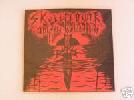 Ripped from February 2007 live sets in Den Haag and Antwerp, this is Skullflower in violent duo mode. Joined by Culver's Lee Stokoe, Matthew Bower continues to use this project as an instrument of assault. Anyone looking for the nearly formed structures of recent Skullflower non CD-R releases will be disappointed. This twin guitar din is a storm of falling patterns, shredded by feedback and broken temple wails. As with most of Bower's work beneath the onslaught there is a strata of high end sparkles, though attention needs to be paid to Abyssic Lowland Hiss to reveal it.
Ripped from February 2007 live sets in Den Haag and Antwerp, this is Skullflower in violent duo mode. Joined by Culver's Lee Stokoe, Matthew Bower continues to use this project as an instrument of assault. Anyone looking for the nearly formed structures of recent Skullflower non CD-R releases will be disappointed. This twin guitar din is a storm of falling patterns, shredded by feedback and broken temple wails. As with most of Bower's work beneath the onslaught there is a strata of high end sparkles, though attention needs to be paid to Abyssic Lowland Hiss to reveal it.
The pair's stubbornly perverse guitars plough lines of noise-born melody, undulating hammer blows of melted string giving off waves of bass damage. These extended sections of shred give off buzzing shakes, the duo's inscrutable plan seeming at first glance to be all about damage. The glorious high end of "Part Three" exposes faces in the tsunami, elements of what could even be a vocal sliding up and down the strings. Moments of almost identifiable guitar, and seeds of the magic of his pairing with Marcia Bassett as Hototogisu, strafe like wayward blasts. See-saw notes of crystal radio wreck meld with human animal wails, Skullflower creating punctured walls of lost and seethed over glories more animal than the metal teethed roar of their recent angry drone releases.
The lack of audience hollering means it impossible to tell whether the Dutch audience going ballistic or utterly wiped out by these performances. For something that initially sounds so violent, this release is surreptitiously appealing after repeated listens. It strangles the senses until the glare of the noise edges into acceptability and the subtle difference and depth reveal themselves. This isn't a drone/noise exercise, but another ladder step rip in the void between free music and Bower's search for the ecstatic. Skullflower are bolting together a skyscraper out of the sound of pandemonium.
samples:
Read More
- Administrator
- Albums and Singles
 Bernard Parmegiani’s fascinating, long out-of-print album finally gets its much-deserved release on CD. Originally released in 1974, this recording is as dark, unsettling, and alluring as anything being released today.
Bernard Parmegiani’s fascinating, long out-of-print album finally gets its much-deserved release on CD. Originally released in 1974, this recording is as dark, unsettling, and alluring as anything being released today.
As far as mentorship goes, studying under Pierre Schaeffer himself at GRM has to be one of the highest pedigrees possible. Even so, such situations can sometimes produce little more than clones of the master. Thankfully, that's not the case here.
There's a paranoiac strain running through Chants Magnetiques. Patterns rev frenetically to high speeds only to unexpectedly crash and burn. Metallic clangs lumber from the darkness to disrupt the progress of everything that's transpired previously. Dire beeps accelerate into emergency warnings, and swelling, amplified squeaks threaten to suffocate the eardrums. The haze and hum of machinery, echoing plunks, eerie drones, and howling winds permeate many of the tracks.
Even so, not every track is so somber. "Ondes," for instance, sounds like several loops of space transmissions, a vaguely promising if not optimistic minimalist exploration that wouldn't be out of place alongside A Rainbow in Curved Air. Elsewhere, beats and pulses add a vague structure. In particular, "Energy" has several competing layers of rhythm that make it the album's longest track and its most complex. In contrast, the album's simplest and most chilling song is "Pulsion," in which a deep pulse provides the foundation for icy feedback drones.
For the most part, little on this album shows its age. Although the technology has advanced considerably since its original release, the most important element of Parmegiani's work isn’t the tools he uses but to what effect he uses them. At times nightmarish and claustrophobic, the sounds on this album produce both anxiety and wonder in ideal proportions.
samples:
Read More
- Matthew Amundsen
- Albums and Singles
 Each of the tracks embodies a different aspect of the mountain wolf of the title. The first, "Ramble," wouldn't sound out of place coming from the open door of a northern Mississippi juke joint just as the sun begins to rise over the horizon. It's an enjoyable if unexceptional song. "Anger" is the one most reminiscent of the main Acid Mothers group with its bewildering guitar sprawling all over the place, sometimes erupting into squalls of feedback. The third track favors the drums in its mix while the rhythm guitar shimmers in the background and the lead calmly skirts the edges. The blues this trio plays is mostly reverent and, apart from an occasional wailing guitar, doesn't add a whole lot new to this established genre. Still, the songs are pleasurable enough and at just under 20 minutes' running time, they don't overstay their welcome.
Each of the tracks embodies a different aspect of the mountain wolf of the title. The first, "Ramble," wouldn't sound out of place coming from the open door of a northern Mississippi juke joint just as the sun begins to rise over the horizon. It's an enjoyable if unexceptional song. "Anger" is the one most reminiscent of the main Acid Mothers group with its bewildering guitar sprawling all over the place, sometimes erupting into squalls of feedback. The third track favors the drums in its mix while the rhythm guitar shimmers in the background and the lead calmly skirts the edges. The blues this trio plays is mostly reverent and, apart from an occasional wailing guitar, doesn't add a whole lot new to this established genre. Still, the songs are pleasurable enough and at just under 20 minutes' running time, they don't overstay their welcome.
Read More
- Mike Barrett
- Albums and Singles
As far as double cassettes go, this is succinct and to the point. Two 24 minute tapes are just enough to showcase Northampton Wool's plinking, lo-fi, scuzzed out guitar noise. Moore needs no introduction.The other collaberator, Bill Nace, is no stranger in the Pioneer Valley experimental music scene. He can be found scraping out caverns of sound with Chris Corsano in Vampire Bellt, Chris Cooper (Fat Worm of Error) in Buddies, or with his long running band XO4. In Noho Wools, we get to see these two axe masters furiously battle it out, and fuse thier weapons into one chaotic, molten mess. This recording is as much of a send up to Dead C as it is to Thurston's unabashed love of Wolf Eyes and Hair Police. It has all the energy and punk attitude, and the chops and skill to back it up. Those who successfully seek out this little jem will be rewarded.
Read More
- Administrator
- Albums and Singles
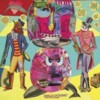 For his umpteenth album, Bill Callahan drops his Smog/(Smog) band designation and now goes by his given name, if only to distance himself from the gloom, misogyny, and misery of his previous incarnation and start fresh. Although his subject matter is indeed sunnier and his songs more polished, he thankfully retains his sense of humor and knack for wordplay.
For his umpteenth album, Bill Callahan drops his Smog/(Smog) band designation and now goes by his given name, if only to distance himself from the gloom, misogyny, and misery of his previous incarnation and start fresh. Although his subject matter is indeed sunnier and his songs more polished, he thankfully retains his sense of humor and knack for wordplay.
His maturation isn't unexpected considering the trajectory of his last couple of albums, but here Callahan is in full bloom. No longer hiding his dark impulses behind a fabricated band name, he now steps naked and confident into the light. The title obviously reflects this change, as does the cover with its garish bright colors and smiling characters.
Light and salvation in the abstract sense inform the themes of "Honeymoon Child" and "Day," so it's not too difficult to think that Callahan has at last found some sort of happiness, or at least some comfort in his own skin. He also invokes water as life on the opening song "From the Rivers to the Ocean," which he has done before, but it's a progression from the past in that now he embraces the fluidity and the changes, realizing that they can sometimes be uplifting rather than defeating. However, this positivity shouldn't be mistaken for blandness as can be the case with other artists. A song title like "A Man Needs a Woman or a Man to be a Man" proves that his tongue is as firmly in cheek as ever.
Yet the most striking element of the album is the music itself. The instrumentation and arrangements are more diverse and accomplished than most anything Callahan has achieved previously, and much of this is indebted to Neil Michael Hagerty. Although I’m not a fan of his recent solo work, Hagerty's masterful touch on this album is impressive. The album's stand out track is easily "Diamond Dancer," also its first single. It's a relentless, disco-driven song and the violin, anxious acoustic guitar, and subtle electric guitar give it just enough edge to balance some of the album's softer elements.
Changing from embittered to embracing isn't easy, especially in front of an audience accustomed to if not expecting a certain degree of moroseness, and perhaps it's this reason alone that compelled Callahan to make a change. No matter the reason, he has made one of his richest albums yet.
samples:
Read More
- Administrator
- Albums and Singles
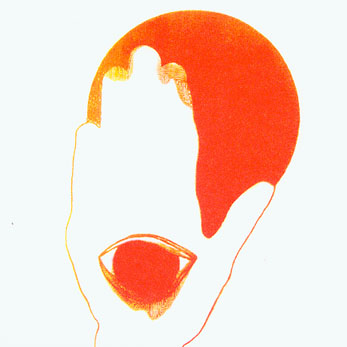 I remember hearing a supposed "recording from hell" on Art Bell's Coast to Coast radio program years ago and upon hearing the latest project from Honey Owens (Jackie-O Motherfucker, Nudge), I was immediately reminded of those apparently satanic vibrations. Blood is Clean isn't particularly vicious, tormented, or evil in character, but Owens' ghostly voice and hazy songs on this record are uniquely haunting.
I remember hearing a supposed "recording from hell" on Art Bell's Coast to Coast radio program years ago and upon hearing the latest project from Honey Owens (Jackie-O Motherfucker, Nudge), I was immediately reminded of those apparently satanic vibrations. Blood is Clean isn't particularly vicious, tormented, or evil in character, but Owens' ghostly voice and hazy songs on this record are uniquely haunting.
Kranky
The sixth of April is associated with a number of events throughout history: the earliest recorded solar eclipse in 648 BC is attributed to this day, Petrarch's first vision of Laura in the church of Sainte-Claire d'Avignon also occurred on April the sixth, it was the day that the United States declared war on Germany in 1917, and it happens to be the day that Robert Peary claimed to have reached the North Pole. "April 6" is Valet's introduction to the world and it's probably helpful to think of each of these events as analogues of a sort to this record. Honey Owens is at her best on her Kranky debut, ushering alien and mystical sounds out of her mind and into the air, converting submerged rhythms into occult ritual, and turning out songs bathed in unquiet isolation and immutable violence. The supernatural are at work, conforming Owens' hands to a position reserved for an afterlife blues and shaping her lips into coded messages for the dead and the devils.
"April 6" opens with her spectral voice moaning wordless sounds into the air and is closely followed by ceremonial drums and tumbling winds. The sound of errata blow about in this storm of sound slowly closes the track, leaving an uneasy feeling in my belly and arousing suspicions about what might follow. Owens could've led the record down a predictably bombastic path at this point, rendering "April 6" nothing more than a prolonged tease in anticipation of some outward explosion. Instead, "Blood is Clean" converts all the stock piled tension into an internal hemorrhage, a whirlpool of fuzzed out guitars and rumbling bass. Her lyrics bring to mind no immediate ideas, but rather vague hallucinations of symbols and emotions that seem equally inviting and disconcerting. The guitar solo on "Blood is Clean" is perhaps one of the most phenomenal things I've heard all year. It tumbles out of the mix and practically destroys the rest of the song and pictures of war-torn landscapes or fire-scarred cities slowly evolve out of the music. It's a moment of musical and sonic brilliance, setting the tone for the rest of the record and completely erasing whatever preconceptions I might have had concerning Owens' music.
The whole of the album isn't quite as structured as "Blood is Clean;" songs like "Burmajuana" and "Tame All the Lions" sound less like songs and more like slowly evolving pictures that never quite acquire enough definition to become recognizable. Even when Owens sings, her voice is so removed and cold that it's hard to imagine it as an intentional part of the recording. It mixes well with the music, but instead of providing any order to the songs, it increases their apparitional qualities and further distances them from reality. They're elegant songs that evolve patiently, even if they don't immediately bring to mind traditional song structures. That is, perhaps, the stroke of artistry that sets Blood is Clean apart from the pack. So often artists will pretend to play with the idea of the song, stretching it beyond its classical limits either by destruction or some lesser form of decay. Owens' own approach maintains the artistry of song-craft and simultaneously expands its horizons.
By fluctuating between abstract and concrete music she creates a bizarre tension that's both enjoyable to the mind and entertaining in general. "My Volcano" combines these two approaches almost perfectly, mimicking the sometimes wandering nature of the otherwise well-defined and structured blues and inserting the more free-form nature of modern guitar performance into that style. It's my favorite piece on the album and perhaps the best thing Owens has ever written. "North" closes the album with a blur of washed out sound, a sound that brought to mind blizzards and the harsh landscape of the planet's polar regions. In a way it's a cleansing piece of music, washing away whatever relations to the world the rest of the album established by way of metaphor. In another way it calls to mind the strange and supernatural spirit of gothic America, immersing me, along with the rest of the album, in a frame of mind partially familiar, nightmarish, and wholly intriguing.
samples:
Read More

